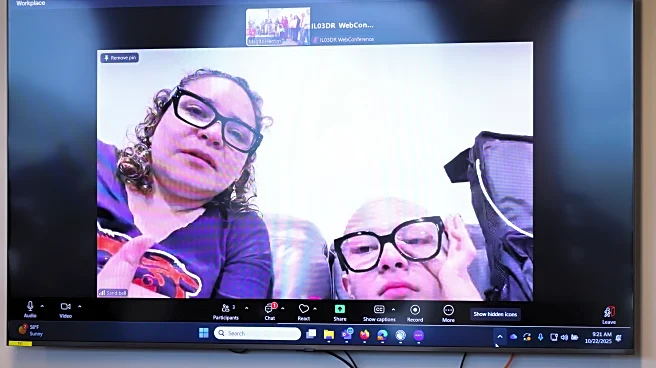What's Happening?
In the late 19th century, Chicago became a hub for spiritualism, a movement that claimed to communicate with the dead. The Bangs sisters, Elizabeth 'Lizzie' and Mary 'May', were prominent figures in this
movement, known for their slate-writing and spirit cabinet performances. They began their careers as mediums in the 1870s, initially conducting seances and later incorporating slate-writing, where messages from the dead appeared on slates. Their performances attracted large audiences, including wealthy patrons, and were held at venues like the Princess Opera House. Despite skepticism and accusations of fraud, the sisters maintained a successful career, adapting their methods to popular trends in spiritualism.
Why It's Important?
The Bangs sisters' activities highlight the cultural and social impact of spiritualism in post-Civil War America, where many sought comfort in the idea of communicating with deceased loved ones. Their success underscores the public's fascination with the supernatural and the willingness to believe in the possibility of an afterlife. The sisters' ability to attract wealthy patrons also reflects the economic dimension of spiritualism, where mediums could profit significantly from their services. This phenomenon raises questions about the ethical implications of exploiting grief for financial gain, as well as the broader societal need for spiritual reassurance during times of uncertainty.
What's Next?
Following the exposure of fraudulent practices by the Bangs sisters, there was increased scrutiny and skepticism towards spiritualism. This led to a decline in their popularity and a shift in public perception. However, the interest in spiritualism persisted, especially during periods of mass trauma, such as World War I. The movement continued to evolve, with new mediums adopting different techniques to captivate audiences. The legacy of the Bangs sisters serves as a reminder of the enduring appeal of spiritualism and the ongoing debate over its legitimacy and ethical considerations.
Beyond the Headlines
The story of the Bangs sisters offers insight into the cultural dynamics of the late 19th and early 20th centuries, where spiritualism intersected with issues of gender, religion, and science. As women, the sisters navigated a male-dominated society, using their roles as mediums to gain influence and financial independence. Their practices also challenged traditional religious beliefs, prompting discussions about the nature of faith and the afterlife. Additionally, the scientific community's interest in debunking spiritualism reflects the era's broader tensions between science and superstition, highlighting the complexities of belief systems during a time of rapid social change.













